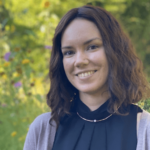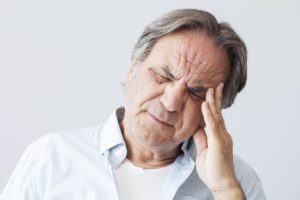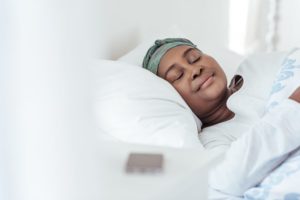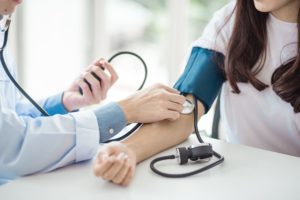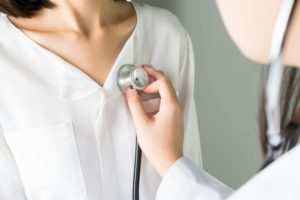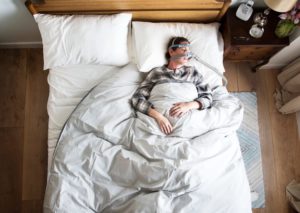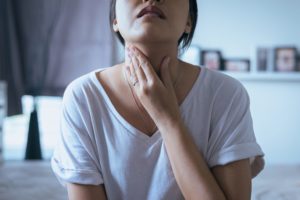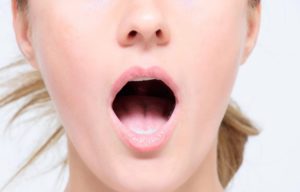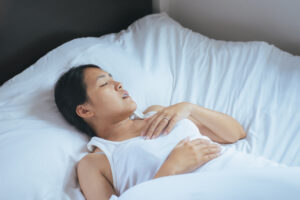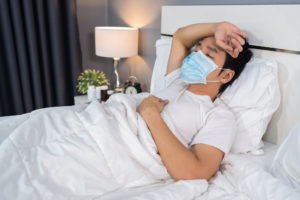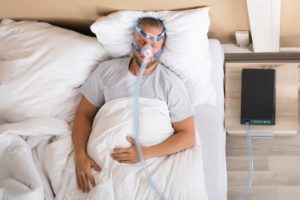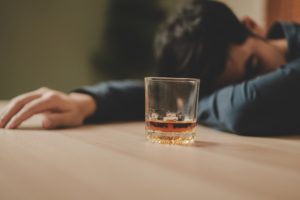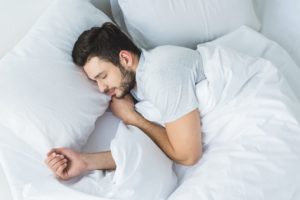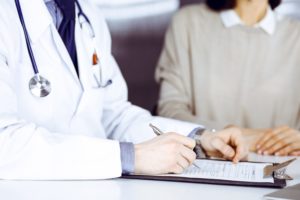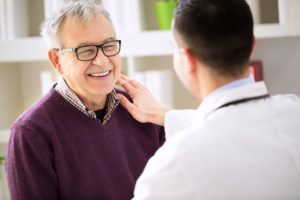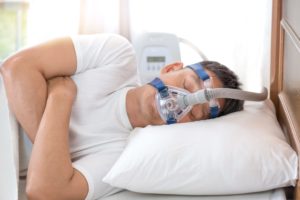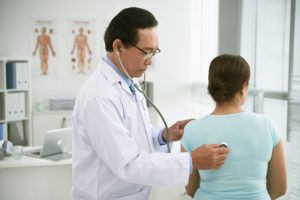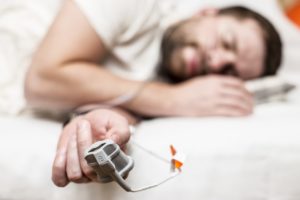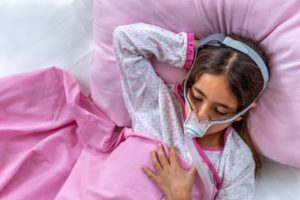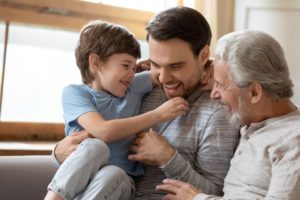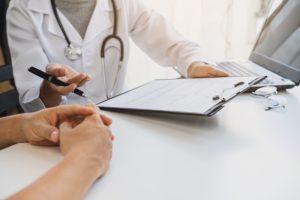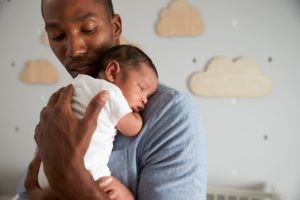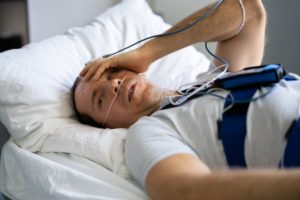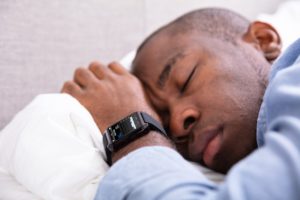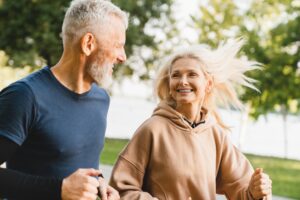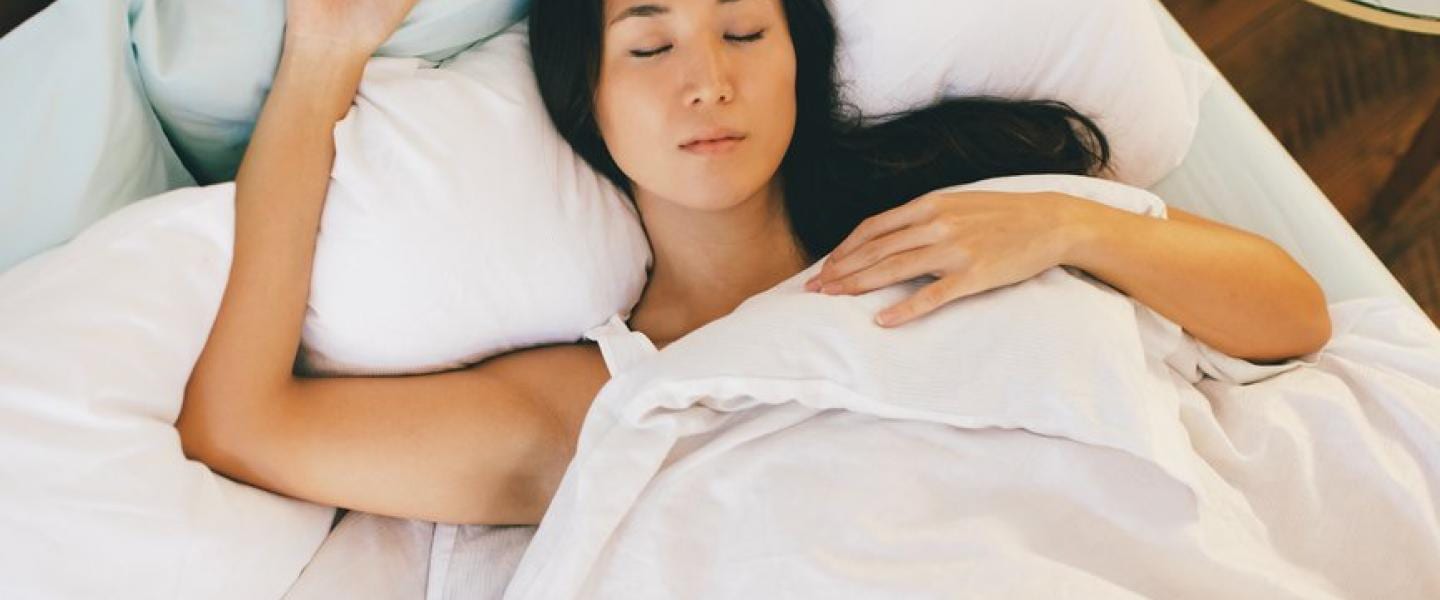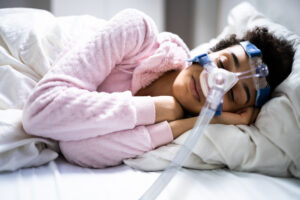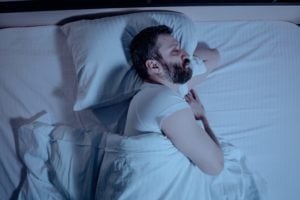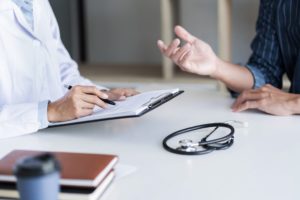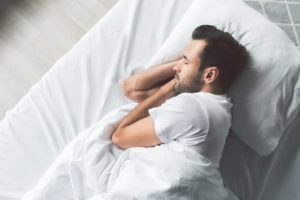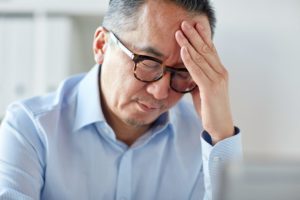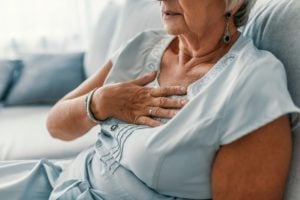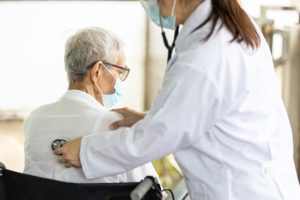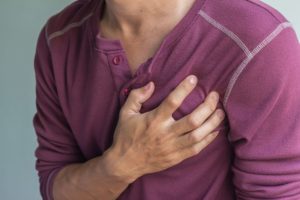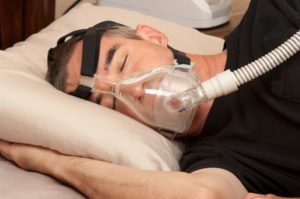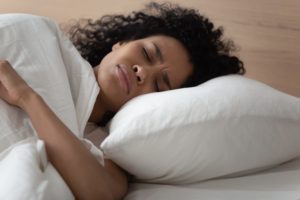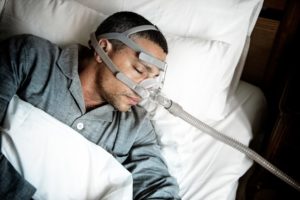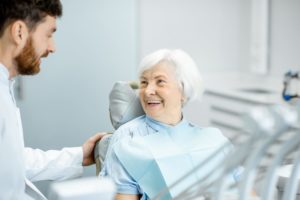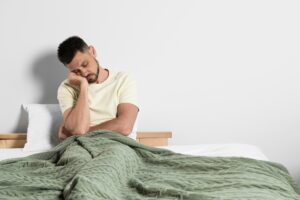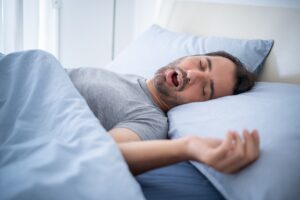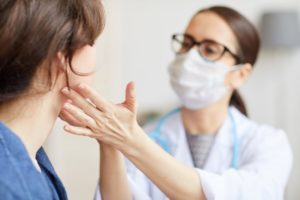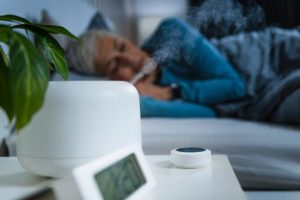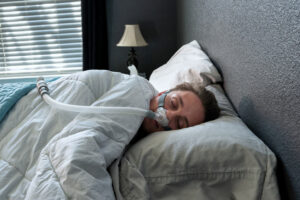Children and Sleep Apnea
What it is, how it harms childrens' sleep and health, and how it can be treated
Sleep apnea is a condition in which breathing is interrupted during sleep. These pauses in breathing affect sleep quality and can lead to daytime sleepiness and behavior issues in children.
The two types of sleep apnea are obstructive sleep apnea (OSA) and central sleep apnea (CSA). In OSA, a person tries to breathe but is unable to because of a constricted or blocked airway. In CSA, there is typically a lack of effort to inhale, so a person briefly stops taking breaths. Similar to adults, OSA is much more common in children than CSA.
Researchers estimate that between 1-5% of children have obstructive sleep apnea. Although studies have shown obstructive sleep apnea to be relatively rare in children, it is also commonly underdiagnosed .
Knowing the causes and symptoms of sleep apnea in children can help you determine when to see a pediatrician. There are tests available to diagnose sleep apnea and treatments that can help manage or resolve this condition.
What Causes Obstructive Sleep Apnea in Children?
There are several causes of obstructive sleep apnea in children:
- Enlarged tonsils and adenoids: A widely recognized risk factor for childhood OSA is enlarged tonsils and adenoids. Tonsils and adenoids are glands located at the back of the throat and are part of the immune system. The tonsils and adenoids may be enlarged due to genetics, frequent infections, or inflammation. When enlarged, these glands constrict the airway, making breathing during sleep more difficult.
- Childhood obesity: OSA in children is also frequently caused by obesity, which also constricts the airway. Obstructive sleep apnea occurs in 60% of obese children .
- Other risk factors: Other causes of OSA include having a small jaw or an overbite, the use of sedatives or opioids, and tongue and throat muscle weakness due to conditions like Down syndrome or cerebral palsy. Having nasal allergies, being around adults who smoke, and having a family history of obstructive sleep apnea are also found to be risk factors for childhood OSA.
Understand Your Child’s Sleep Apnea Risk
Answer three questions to take charge of troubled sleep.
What Causes Central Sleep Apnea in Children?
Central sleep apnea can occur for a variety of reasons in children. It is important to note that a few central apnea events during sleep is considered normal. Central sleep apnea has been associated with rare genetic disorders in children, such as congenital central hypoventilation syndrome. It may also be present when children have health conditions that interfere with parts of the central nervous system that controls breathing.
What Are the Symptoms of Sleep Apnea?
Snoring is a hallmark symptom of obstructive sleep apnea. However, not all children who snore have sleep apnea, and not all children with sleep apnea snore. Only a doctor can determine whether a child’s symptoms are due to sleep apnea.
In addition to snoring, other symptoms of sleep apnea in children during sleep include:
- Breathing through the mouth during sleep
- Coughing or choking
- Night sweats
- Sleepwalking
- Sleep talking
- Sleep terrors
- Bedwetting
Sleep apnea also causes detrimental symptoms during waking hours. These may include:
- Daytime sleepiness
- Difficulty concentrating
- Behavioral problems that often mimic attention deficit hyperactivity disorder (ADHD), such as hyperactivity, rebelliousness, impulsiveness
- Morning headaches
- Irritable mood
- Difficulty controlling emotions
How Is Sleep Apnea Diagnosed in Children?
First, a doctor gathers information from the child and parent or guardian about the child’s sleep habits and any daytime and nighttime symptoms. The doctor may also perform a physical examination of the child’s mouth, neck and throat to look for physical characteristics that increase risk for sleep apnea (such as enlarged tonsils and adenoids).
If this initial evaluation indicates further testing is appropriate, the doctor may suggest polysomnography, which is a sleep study performed overnight at a sleep clinic. Polysomnography involves measuring specific body functions while a person is sleeping. It is painless and noninvasive. Polysomnography is the gold standard method for evaluating suspected sleep apnea, as it provides the most definitive results.
Home sleep tests are generally not recommended for children, based on the American Academy of Pediatrics and the American Academy of Sleep Medicine guidelines.

What Is the Treatment for Sleep Apnea in Children?
Treatments for childhood sleep apnea depend on the cause and severity of symptoms and should be discussed in detail with the healthcare provider:
- Adenotonsillectomy: Childhood sleep apnea caused by enlarged tonsils and adenoids may be cured by surgically removing the tonsils and adenoids.
- Myofunctional therapy: Mouth and throat exercises, also known as “myofunctional therapy” or “oropharyngeal exercises,” have been shown to improve obstructive sleep apnea and snoring in children .
- Orthodontics: Rapid maxillary expansion and mandibular advancement devices are orthodontic approaches that use dental hardware to create more space in the mouth and improve the flow of air through the airway.
- CPAP: Also called continuous positive airway pressure, CPAP is a machine that continuously pumps air into the airway. CPAP users wear a mask attached to a pump while they are sleeping. Sleeping with a CPAP mask can be a difficult adjustment for children and may require behavioral support.
- Treatment of allergies and sinus inflammation: Medications, such as a steroid nasal spray, saline nasal rinses, and/or other allergy medications, may be an option for children with mild sleep apnea symptoms. These medications can reduce airway constriction and poor tongue posture caused by constantly breathing through the mouth. Allergy treatment is often done in conjunction with other treatment options.
Additionally, children with very mild or no symptoms may be monitored over time without administering treatment . Supportive care during watchful waiting can include education on good sleep habits, close monitoring of symptoms and frequent follow up with the healthcare provider.
What Natural Treatments Are Available For Sleep Apnea in Children?
The following natural treatments may help reduce obstructive sleep apnea in children. A child’s healthcare provider will be in the best position to discuss the risks and benefits of the natural treatment listed below:
- Weight loss: In children with obesity and obstructive sleep apnea, weight loss can alleviate symptoms. A pediatrician can assist with healthy diet and exercise planning. A dietician or nutritionist can also help create a weight loss plan. However, weight loss can take time, and a child with severe symptoms may benefit from initiating treatment that provides relief more quickly.
- Avoiding allergens: It may be helpful to avoid substances—such as pollen and mold—that can cause allergic rhinitis (an allergic reaction of the nasal passages). Allergic rhinitis leads to congestion and airway restriction, which contribute to sleep apnea symptoms.
- Nasal breathing retraining: Nasal breathing retraining (also called myofunctional therapy) is a type of physical therapy that aims to strengthen the tongue and surrounding muscles to help a child breathe effectively at night. It may help reduce symptoms, but data is limited.
- Positional therapy: Positional therapy involves training a person to sleep in a different position. It may be used in children whose sleep apnea occurs only when they sleep on their back. Elevating the head of the bed can also help alleviate sleep apnea. However, limited information is available about the effectiveness of positional therapy in children.
How Is Sleep Apnea Different Between Adults and Children?
Sleep apnea leads to poor-quality sleep in all affected people, but the daytime symptoms can be different between adults and children. Adults are more likely to exhibit daytime sleepiness and fatigue, while children are more likely to show behavior issues such as difficulty concentrating and hyperactivity.
Additionally, sleep apnea is treated differently in children. In adults, the most common treatment is CPAP, while the most common treatment for children is surgery. Certain orthodontic treatments are only helpful in actively growing children and are not an option for adults with sleep apnea.
When Should We See a Doctor?
It is a good idea to consult a doctor anytime abnormal sleep symptoms are present. Also, children who are not sleeping well may have trouble focusing, display irritability, or have poor impulse control. If a child is struggling with behavior concerns, it could be helpful to ask the doctor whether a sleep disorder such as sleep apnea may be a contributing factor.
References
10 Sources
-
Li, Z., Celestin, J., & Lockey, R. F. (2016). Pediatric Sleep Apnea Syndrome: An Update. The journal of allergy and clinical immunology. In practice, 4(5), 852–861.
https://linkinghub.elsevier.com/retrieve/pii/S2213219816301052 -
Marcus, C. L., Brooks, L. J., Draper, K. A., Gozal, D., Halbower, A. C., Jones, J., Schechter, M. S., Ward, S. D., Sheldon, S. H., Shiffman, R. N., Lehmann, C., Spruyt, K., & American Academy of Pediatrics (2012). Diagnosis and management of childhood obstructive sleep apnea syndrome. Pediatrics, 130(3), e714–e755.
https://publications.aap.org/pediatrics/article/130/3/e714/30258/Diagnosis-and-Management-of-Childhood-Obstructive -
Meltzer, L. J., Johnson, C., Crosette, J., Ramos, M., & Mindell, J. A. (2010). Prevalence of diagnosed sleep disorders in pediatric primary care practices. Pediatrics, 125(6), e1410–e1418.
https://pubmed.ncbi.nlm.nih.gov/20457689/ -
Strohl, K. P. (2020, September). Obstructive sleep apnea in children. Merck Manual Professional Version., Retrieved August 11, 2020, from
https://www.merckmanuals.com/professional/pulmonary-disorders/sleep-apnea/obstructive-sleep-apnea-in-children -
Narang, Indra, Matthew, Joseph L. (2012, August). Childhood Obesity and Obstructive Sleep Apnea. Journal of Nutrition and Metabolism., Retrieved August 27, 2020.
https://www.ncbi.nlm.nih.gov/pmc/articles/PMC3432382/ -
A.D.A.M. Medical Encyclopedia. (2021, August 10). Pediatric sleep apnea. MedlinePlus., Retrieved August 7, 2020, from
https://medlineplus.gov/ency/article/007660.htm -
O’Brien LM, Holbrook CR, Mervis CB, et al (2003). Sleep and neurobehavioral characteristics of 5- to 7-year-old children with parentally reported symptoms of attention-deficit/hyperactivity disorder. Pediatrics, 111(3):554-563.
https://publications.aap.org/pediatrics/article/111/3/554/79884/Sleep-and-Neurobehavioral-Characteristics-of-5-to -
Camacho, Macario et al. “Myofunctional Therapy to Treat Obstructive Sleep Apnea: A Systematic Review and Meta-analysis.” Sleep vol. 38,5 669-75. 1 May. 2015, doi:10.5665/sleep.4652.
https://www.ncbi.nlm.nih.gov/pmc/articles/PMC4402674/ -
Rana, M., August, J., Levi, J., Parsi, G., Motro, M., & DeBassio, W. (2020). Alternative Approaches to Adenotonsillectomy and Continuous Positive Airway Pressure (CPAP) for the Management of Pediatric Obstructive Sleep Apnea (OSA): A Review. Sleep disorders, 2020, 7987208.
https://pubmed.ncbi.nlm.nih.gov/32695520/ -
Marcus, C. L., Moore, R. H., Rosen, C. L., Giordani, B., Garetz, S. L., Taylor, H. G., Mitchell, R. B., Amin, R., Katz, E. S., Arens, R., Paruthi, S., Muzumdar, H., Gozal, D., Thomas, N. H., Ware, J., Beebe, D., Snyder, K., Elden, L., Sprecher, R. C., Willging, P., … Childhood Adenotonsillectomy Trial (CHAT) (2013). A randomized trial of adenotonsillectomy for childhood sleep apnea. The New England journal of medicine, 368(25), 2366–2376.
https://pubmed.ncbi.nlm.nih.gov/23692173/
